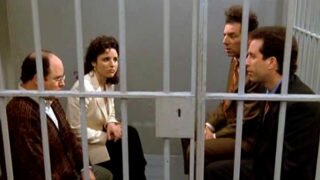
Making Art Pay
This story is part of a series profiling working artists as they try to make a living in the Triangle. We’ll talk to musicians, dancers, performers, painters and poets about the state of the Triangle arts scene and the possibilities for its future.
With Paper and Ink, Jina Valentine Delves Below the Surface
Hanging in neat rows on a wall in one of the exhibition rooms at the 21C Hotel, Jina Valentine’s latest exhibit is at first unassuming. It consists of a dozen sheets of rough, white paper, side by side, behind glass -each one stained with a peculiar black mark.
 “The piece is called ‘Literacy Test: Rorschach,’” Jina explains. “It represents the trials black people were put through -are still being put through -to get voting rights.”
“The piece is called ‘Literacy Test: Rorschach,’” Jina explains. “It represents the trials black people were put through -are still being put through -to get voting rights.”
Each black mark, it turns out, is actually the imprint of a gerrymandered congressional district, so distorted that,  out of context, it looks like nothing more than an ink blot. The idea of the piece, as Jina describes it, is to reveal “the absurdity of the process and protocols that determine how voting districts are defined.”
out of context, it looks like nothing more than an ink blot. The idea of the piece, as Jina describes it, is to reveal “the absurdity of the process and protocols that determine how voting districts are defined.”
And that’s just the beginning of the complex symbolism captured in these pulpy, innocuous little pieces of paper. The paper itself is made from Sea Isle cotton shirts -a southern luxury with a sordid history, affordable only to those, Jina contends, who can also afford to gerrymander congressional districts. The ink is a corrosive concoction made of iron rust and gall nuts, which will slowly eat through the paper, representing how gerrymandering destroys the fabric of society.

 Much of Jina’s work is like this: understated black and white images -often text -which contain within them layers of complexity and meaning. An exhibit she has underway at the Weatherspoon Museum in Greensboro, for example, uses handmade paper and ink drawings to explore the effects of the Supreme Court’s 2013 decision to gut the Voting Rights Act.
Much of Jina’s work is like this: understated black and white images -often text -which contain within them layers of complexity and meaning. An exhibit she has underway at the Weatherspoon Museum in Greensboro, for example, uses handmade paper and ink drawings to explore the effects of the Supreme Court’s 2013 decision to gut the Voting Rights Act.
Jina says that while her work has always been about the “stratification of history” and the layers of information contained within objects, her focus has become more overtly political in recent years.
“I have a four year old son, and he has definitely changed the way I think about my work,” she says. “The first series of work I made after he was born was about my ability to sympathize, but my inability to empathize, with moms who had lost their sons to gun violence -more specifically to police violence. So now I’m thinking about the world he’s going to inherit and how to prepare him to navigate that.”
Jina, who is a professor in the art department at UNC, moved to Chapel Hill from Paris a few years ago, having spent most of her artistic career before that in mid-sized metropolis areas like Philadelphia and San Francisco.

“They told me Chapel Hill was the Paris of the Piedmont,” she recalls.
Upon arriving in North Carolina, she found, as many artists do, that the Triangle offered a unique mix of quality-of-life and artistic opportunity.
“The community here is small, but everyone knows each other and we all support each other. That goes for artists and gallerists, museum collectors and curators. And here, you can have space to work, you can have a house with a basement, studio space…”
 Jina does feel that one thing is lacking in the Triangle though: private galleries. While there are plenty of museums and artist-run spaces in the Triangle, there are very few spaces where artists and collectors can connect. Without more robust involvement from local collectors, she notes, it will be hard for the Triangle art scene to reach a critical mass.
Jina does feel that one thing is lacking in the Triangle though: private galleries. While there are plenty of museums and artist-run spaces in the Triangle, there are very few spaces where artists and collectors can connect. Without more robust involvement from local collectors, she notes, it will be hard for the Triangle art scene to reach a critical mass.
But that is a task for some else.
“I’m hoping that’s what’s next for here, but I’m not going to start a gallery -that’s too much work,” she says with a laugh.
Her main piece of advice for artists who are trying to make a living in the Triangle now is simple: never stop working. But that, she admits, is easier said than done.
“It was several years after starting to work at UNC that I realized that I must mark off days during the week as mine,” she says. “No meetings, no internet, no teaching, no grading. Those are my studio days. So I think regardless of what people do, your studio time is really sacred. You’ve got to treat it like it’s your job.”
She also recalls the story of her studio assistant, who found himself unsure of what next steps to take in his career.
 “He posted on FB that he was interested in working with artists and wanted to stay [in the Triangle] and he wanted to know if anyone needed help. And he’s an amazing artist in his own right, so of course people wanted his help.”
“He posted on FB that he was interested in working with artists and wanted to stay [in the Triangle] and he wanted to know if anyone needed help. And he’s an amazing artist in his own right, so of course people wanted his help.”
The lesson is obvious.
“Do that,” she says. “If there’s something you want, post it on Facebook or Twitter or call your friends and tell them you’re hungry and you want to work. Probably someone has an opportunity for you.”
Find out more about Jina Valentine’s exhibit at 21C here. And check out more of her work here.








